2022 Narrative
September 11th: The group gathered in the morning, shortly after breakfast, for introductions and then headed out for a nice half day of birding in the Anchorage area. We’d originally planned to leave for St Paul today but the Ravn Air flight schedule changed somewhat last minute (after we’d all already purchased our arrival flights) so we adjusted our departure flights and added an extra day of birding on the mainland, affording us a few species we would’ve missed on this tour otherwise; birding logistics in Alaska are never straightforward, no matter how hard you try. We started the morning at Connor’s Bog where we had gorgeous views of Pacific Loons in breeding plumage, and sifted through large rafts of ducks including some very nice Barrow’s Goldeneyes. Songbird activity in the northern woodlands is really slowing this time of year but we still managed to encounter a nice mixed flock with fabulous up-close views of Boreal and Black-capped chickadees, Slate-colored Juncos, and Orange-crowned and Yellow warblers. A few folks glimpsed a Brown Creeper moving amongst the other birds in the flock. At the Westchester Lagoon we enjoyed watching the nearby waterfowl, including a couple of Red-necked Grebes still in breeding plumage. This may be the best place on the planet to study the differences between Greater and Lesser scalps. Nearby on the coastal trail we found a small flock of Bonaparte’s Gulls. We stopped for lunch at the Middle Way Cafe and then headed to Potter’s Marsh. On the marsh boardwalk we had a nice view of a Common Merganser and watched a female Mallard choke down a sizable fish, which was a new experience for all of us! On the south end of the marsh was a flock of Trumpeter Swans. After leaving the marsh a few folks headed to pick up some extra gear in town and stopped for ice cream along the way. We enjoyed our first dinner together at Piper’s and went over logistics, birds, and set expectations for the tour.
September 12th: St Paul travel days are always a bit nerve wracking, but the flight left on-time and arrival was smooth, with only a short refueling stop at Cold Bay. Once on the island we were greeted by our fabulous local guides/hosts, Sulli Gibson and Nathan Goldberg. We checked into the hotel as quickly as possible and headed out for a bit of birding before dinner. We hadn’t even left the hotel property before we were enjoying the flocks of Pribilof Island (umbrina) Gray-crowned Rosy-Finches. These Rosies are 20-30% heavier than their mainland counterparts and have very dark brown plumage and all gray heads. We made a quick stop at Weather Bureau Lake to watch the Black-legged and Red-legged kittiwakes bathing in the freshwater. Every now and then the bathing kittiwakes would flutter up out of the water, and hover low over the surface exposing their namesake leg colors. A flyby Rock Sandpiper marked yet another new bird for most folks on the trip. Nearby at Salt Lagoon we spotted the long-staying Steller’s Eider and had our first looks at Red-faced Cormorants marking species number 700 for Steve’s ABA list - congrats! Just around the corner we found a vocalizing Wandering Tattler. After dinner we headed to Pumphouse Lake for a little marsh crawl, flushing Sharp-tailed Sandpipers, Long-billed Dowitchers, Pectoral Sandpipers, and Red-necked and Red phalaropes.
September 13th: We started the day at Marunich Point and wandered along the shoreline hoping to flush passerines from the eroding shoreline. Songbirds were few and far between but the sunrise was spectacular. We enjoyed distant views of Yellow-billed Loons, and a very large raft of King Eiders. Further down the shoreline we had spectacular views of a vocal Gray-tailed Tattler dancing along the surf line, practically at our feet. After Marunich we headed to Main Crab Pots for our first round of pot-whacking! We didn’t find much in the way of songbirds but we did have some very nice views of the local subspecies of Pacific Wren.
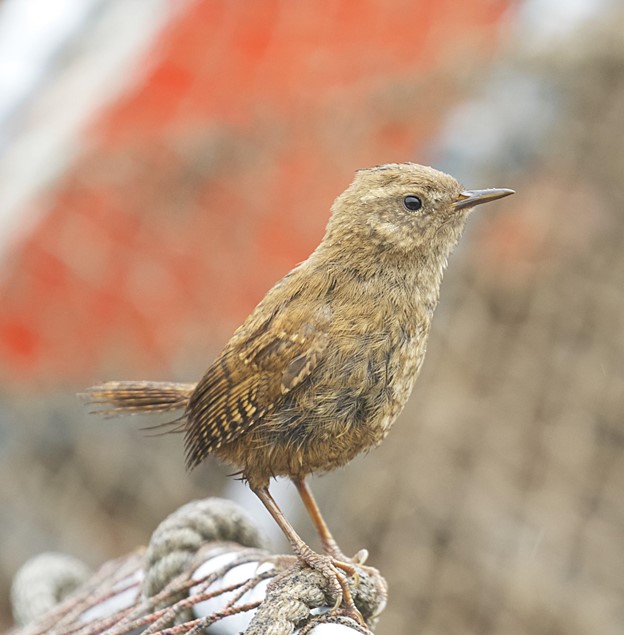
The local island subspecies of Pacific Wren trying to figure out why we’re walking around the crab pots hitting them with a pole (above). Photo: Raymond VanBuskirk
In the afternoon we visited Reef Cliffs and Seal Blind for some up-close looks at the island’s nesting seabirds and thousands upon thousands of Northern Fur Seals hauled out along the shoreline - the sights, sounds, and smells are not likely to be forgotten anytime soon.
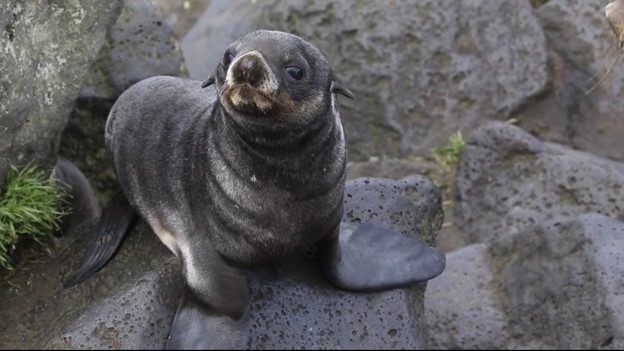
One of the Northern Fur Seal pups (above). Note the external ears, differentiating them from the Sea Lions. Photo: Raymond VanBuskirk
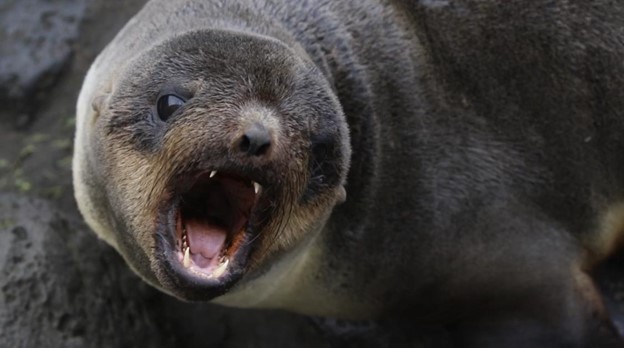
Don’t mess with me! Subadult Northern Fur Seal (above). Photo: Raymond VanBuskirk
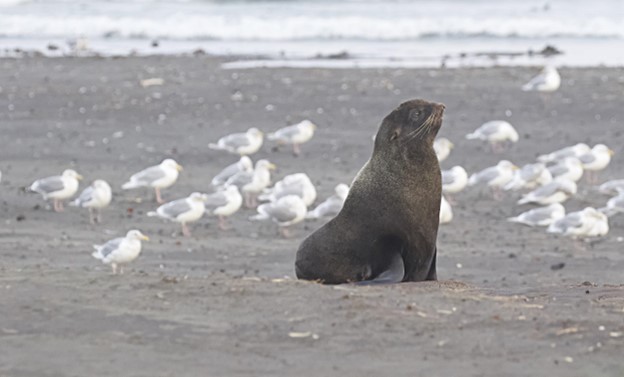
A Northern Fur Seal trying to be a Glaucous-winged Gull (above). Photo: Raymond VanBuskirk
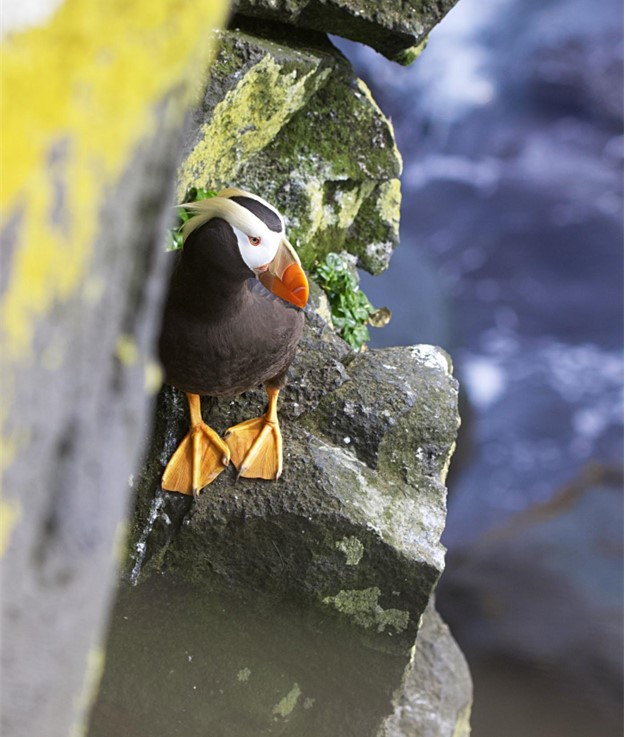
A breeding plumage Tufted Puffin at Reef Cliffs (above). Photo: Raymond VanBuskirk
As we were making our way back toward the middle of the island we got a call from Sulli - male EURASIAN BULLFINCH in the Kamanista Quarry! Nathan stepped on the gas and before long we found ourselves in an old collapsed lava tube, surrounded by massive rocks, looking for a single bird (though thankfully very distinctive). Shortly before we arrived it flew off with a group of Snow Buntings and now our job was to refind it. I took the upper level of the quarry while the rest of the group walked with Nathan and Sulli below. As we neared the end of the quarry Nathan glimpsed the bird as it flushed off-trail into the “upper cut”, a particularly treacherous section of the quarry. Nathan and I elected to climb up into the uppercut and navigate the unstable rocks and deep trenches to try and bring the bird back around for folks to view. We did eventually refind it, but it wasn’t cooperating, and eventually we decided we’d need to flush it all the way down the length of the upper cut before we could get it back in the main canyon where participants could hope to see it. Some time went by but things were playing out just as we’d hoped. We coordinated with Sulli to get the group in position and we made a final gentle push, sending the spectacular finch over the lip of the quarry and right into everyone’s view. High-fives and joyful chatter all around! Once back in the main canyon we were able to study it for prolonged periods in the scope. This is only the 6th island record, and the first since 2012, it also marks the earliest record ever for Alaska. The trip was arguably made by this bird, but many others lied ahead.
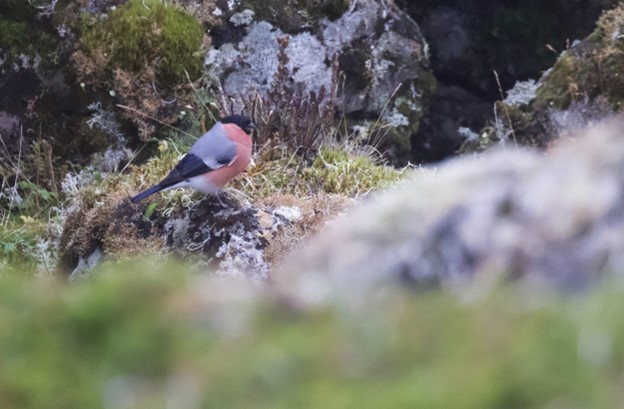
The absolutely jaw-dropping male Eurasian Bullfinch in the Kamanista Quarry (above). Photo: Raymond VanBuskirk
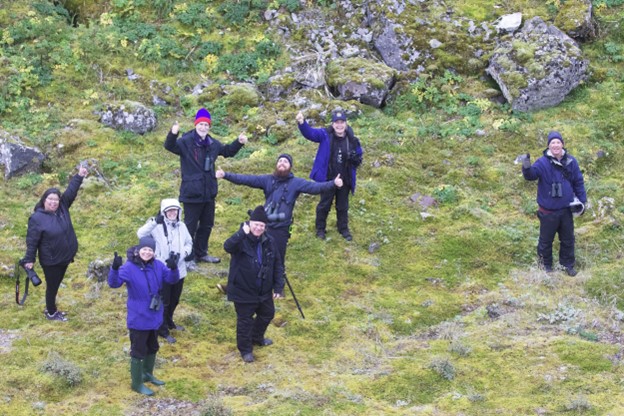
Lots of happy birders! The Eurasian Bullfinch was a lifer for everyone on the island, including all leaders (above). Photo: Raymond VanBuskirk
September 14th: We spent the morning hunting for more vagrant passerines around the island without much luck but we did bump into a couple of very nice Slaty-backed Gulls on the Zoltoi Sands beach. We also stopped to have another look at the family of Arctic Foxes at Salt Lagoon harbor.
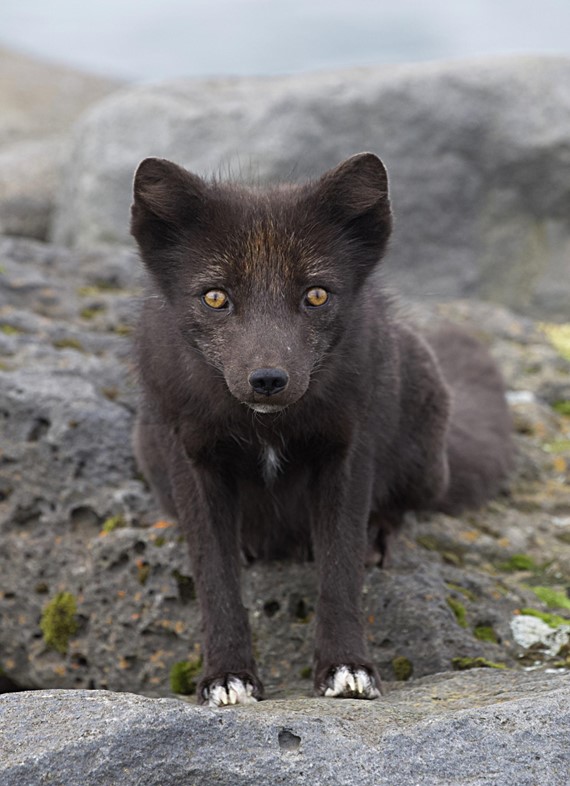
An up close look at a St. Paul Island Arctic Fox (above). The foxes on the island all have beautiful dark grey or black coats. Photo: Raymond VanBuskirk
In the evening we went on a good ole fashion snipe hunt at the Antone Sough, where a Common had been seen earlier in the day. After a lot of walking, and some circling back, we were able to flush the Common Snipe. Most views were in less than ideal lighting but the leaders manahed to get a few photos, while others in the group were able to make observations of the pale underwing coverts and thick white trailing edge to the wing. Nathan’s photos of the snipe were particularly reassuring since Raymond and Sulli’s were a bit underexposed giving the underwings a grayish appearance (whoops).
September 15th: Though not originally planned this way, today was our new departure day since a very large storm was making its way to the island from the Japanese coast and winds were expected to blow up to 90 mph, potentially causing a massive storm surge. Our regularly scheduled flights weren’t to leave until the 16th but the airline had already canceled that flight due to storm predictions with no other flights coming in for multiple days. We elected to bird like crazy until just before the afternoon flight back to the mainland. We birded hard, starting the morning at Ridge Wall, where we stood in awe as Northern Fulmars, both puffin species, Red-faced Cormorants, and Red-legged Kittiwakes made close flights along the edge of a steep cliff that plummeted hundreds of feet down to the ocean below. Sometime in the days leading up to today the Red-legged Kittiwakes made their mass exodus off the nesting cliffs but there were still a few immature in the area and at least one adult flew in and perched on the cliff, showing off its waxy red legs and feet.
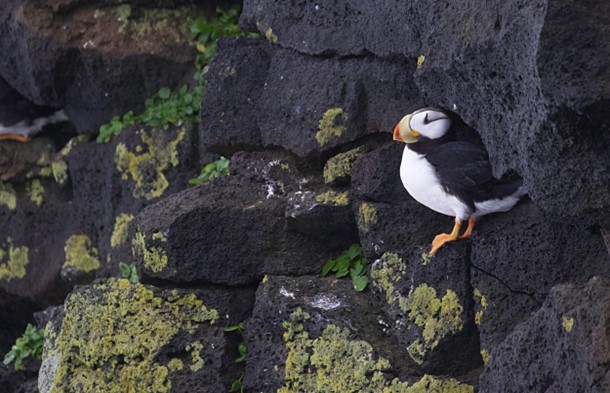
Horned Puffin tucked away on a cliff edge (above). Photo: Raymond VanBuskirk
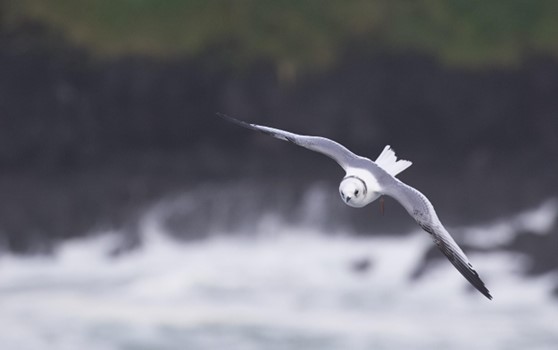
Immature Red-legged Kittiwake riding the wind at Ridge Wall (above). Photo: Raymond VanBuskirk
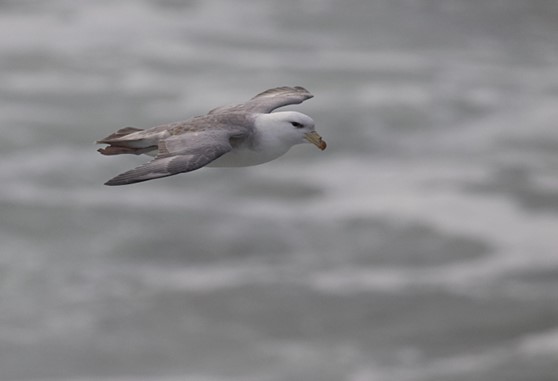
A Northern Fulmar inspects the group from the safety of the wing (above). Photo: Raymond VanBuskirk
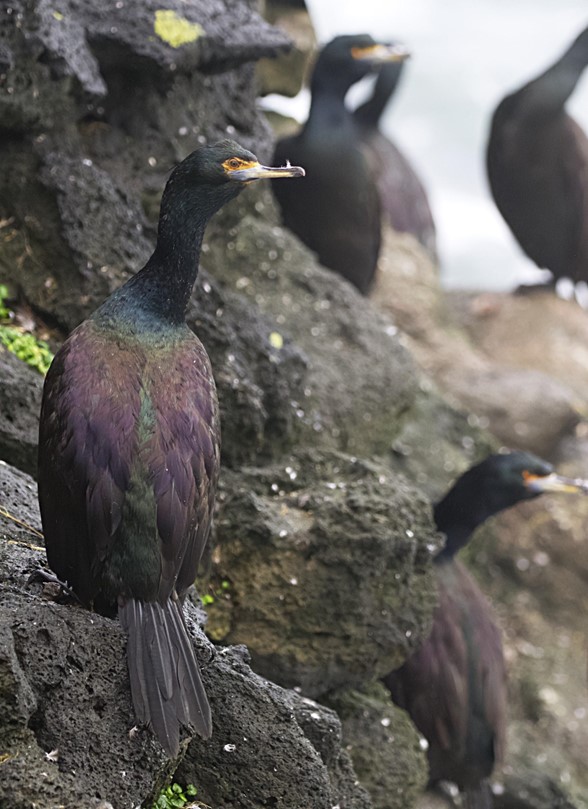
Red-faced Cormorants are spectacular when seen in good lighting (above). Photo: Raymond VanBuskirk
On the way back from the cliffs were stopped to scan Antone Slough for the long-staying Brant and Eurasian Wigeon. The Brant was there but there was no sign of the wigeon. As we were preparing to move on Nathan called Raymond over to his scope to confirm that he wasn’t losing his mind - it was the Spotted Redshank, tucked all the way on the far end of the lake in a tiny marshy cove. This bird had arrived in the week leading up to our trip but disappeared shortly before we got there. What a treat to see this mega rare shorebird, and only hours before our early departure. We made our way around the lake and walked in for closer views! There were celebrations all around. With only a little time left before departure we made our way out to Little Polovina Lake and finally connected with a Eurasian Wigeon which was new for the trip. We headed back to airport, said our goodbyes, and headed back to the mainland after an absolutely fabulous few days on the island.
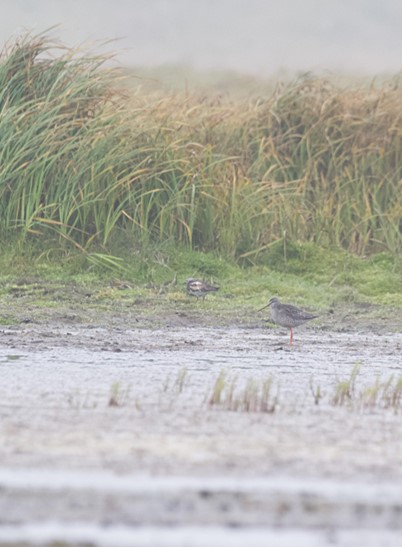
Spotted Redshank with a Ruddy Turnstone in the back (above). Photo: Raymond VanBuskirk
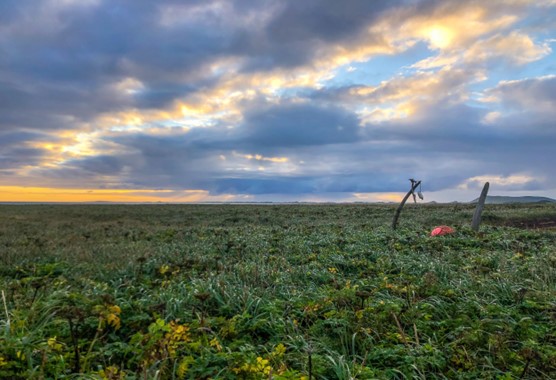
Sunrise over the celery (above). Photo: Raymond VanBuskirk
Created: 09 November 2022
